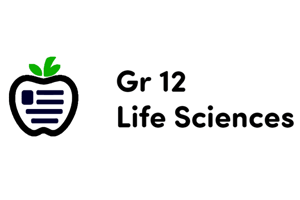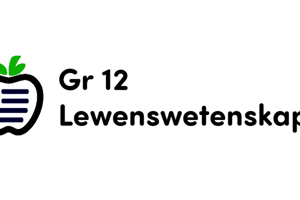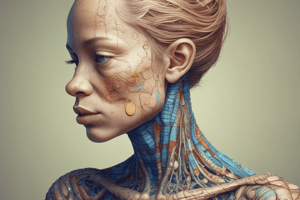Podcast
Questions and Answers
Which inheritance pattern is characteristic of genes on the X-chromosome?
Which inheritance pattern is characteristic of genes on the X-chromosome?
- Mitochondrial inheritance
- Codominant inheritance
- X-linked recessive inheritance (correct)
- Autosomal dominant inheritance
What is a key characteristic of X-linked recessive mutations?
What is a key characteristic of X-linked recessive mutations?
- Males are more frequently affected than females (correct)
- Both males and females are equally affected
- Females cannot be carriers
- It is only passed down by male ancestors
In human pedigrees, which of these is an example of an X-linked recessive condition?
In human pedigrees, which of these is an example of an X-linked recessive condition?
- Down syndrome
- Sickle cell anemia
- Cystic fibrosis
- Hemophilia (correct)
Which of the following represents a possible carrier status for X-linked recessive conditions?
Which of the following represents a possible carrier status for X-linked recessive conditions?
What occurs during crossing over between two genes?
What occurs during crossing over between two genes?
Which allele configuration is not a result of genetic linkage?
Which allele configuration is not a result of genetic linkage?
Who is most likely to express symptoms of an X-linked recessive disorder?
Who is most likely to express symptoms of an X-linked recessive disorder?
Which of the following statements about X-linked disorders is incorrect?
Which of the following statements about X-linked disorders is incorrect?
What genotype would result in an unaffected phenotype for an autosomal recessive trait?
What genotype would result in an unaffected phenotype for an autosomal recessive trait?
Which of the following genotypes indicates an affected male in an X-linked recessive trait?
Which of the following genotypes indicates an affected male in an X-linked recessive trait?
In X-linked dominant inheritance, what phenotype would a male with the genotype dY express?
In X-linked dominant inheritance, what phenotype would a male with the genotype dY express?
Which statement best describes the relationship between genome size and organismal complexity?
Which statement best describes the relationship between genome size and organismal complexity?
What is the range of recombination frequency for linked genes?
What is the range of recombination frequency for linked genes?
What type of transposon replicates and transposes via DNA replication?
What type of transposon replicates and transposes via DNA replication?
Which of the following statements about Y-linked genes is true?
Which of the following statements about Y-linked genes is true?
What genotype combination represents an affected phenotype in autosomal dominant traits?
What genotype combination represents an affected phenotype in autosomal dominant traits?
Which of the following statements about the human genome is true?
Which of the following statements about the human genome is true?
What best describes the inheritance of mitochondrial DNA?
What best describes the inheritance of mitochondrial DNA?
What is a possible consequence of a defect causing the retention of paternal mitochondrial DNA?
What is a possible consequence of a defect causing the retention of paternal mitochondrial DNA?
Which genotype represents an unaffected female in X-linked dominant inheritance?
Which genotype represents an unaffected female in X-linked dominant inheritance?
How are mitochondria and chloroplasts similar in terms of genetic inheritance?
How are mitochondria and chloroplasts similar in terms of genetic inheritance?
What type of allele representation is typically used for recessive mutations?
What type of allele representation is typically used for recessive mutations?
What can be said about crossing over between two linked genes?
What can be said about crossing over between two linked genes?
Who will inherit Y-linked traits?
Who will inherit Y-linked traits?
What is defined as any heritable change in the genetic material?
What is defined as any heritable change in the genetic material?
Where do germ-line mutations occur?
Where do germ-line mutations occur?
Which statement regarding how mutations arise is true?
Which statement regarding how mutations arise is true?
What type of mutations are associated with cancer?
What type of mutations are associated with cancer?
Which technique allows for the identification of mutant cells on selective media?
Which technique allows for the identification of mutant cells on selective media?
Which of the following statements about somatic mutations is correct?
Which of the following statements about somatic mutations is correct?
Which option is a misconception about the timing of mutations?
Which option is a misconception about the timing of mutations?
What does the velvet template method involved in mutation selection indicate?
What does the velvet template method involved in mutation selection indicate?
What type of mutation results in a change in the amino acid sequence?
What type of mutation results in a change in the amino acid sequence?
Which type of mutation introduces a stop codon into the protein sequence?
Which type of mutation introduces a stop codon into the protein sequence?
What kind of mutation does NOT change the amino acid encoded by a gene?
What kind of mutation does NOT change the amino acid encoded by a gene?
Which of the following best describes a missense mutation?
Which of the following best describes a missense mutation?
What would be an effect of a nonsense mutation on protein synthesis?
What would be an effect of a nonsense mutation on protein synthesis?
In which situation would a nucleotide substitution be classified as a nonsense mutation?
In which situation would a nucleotide substitution be classified as a nonsense mutation?
What is the primary consequence of a synonymous mutation?
What is the primary consequence of a synonymous mutation?
How do insertions and deletions generally affect gene expression?
How do insertions and deletions generally affect gene expression?
What effect does a frameshift mutation have on protein translation?
What effect does a frameshift mutation have on protein translation?
What are single nucleotide polymorphisms (SNPs)?
What are single nucleotide polymorphisms (SNPs)?
Which statement about genetic variation is accurate?
Which statement about genetic variation is accurate?
How do variable number of tandem repeats (VNTR) contribute to DNA fingerprinting?
How do variable number of tandem repeats (VNTR) contribute to DNA fingerprinting?
What is a common result of an insertion or deletion mutation?
What is a common result of an insertion or deletion mutation?
What does genetic variation primarily reflect among individuals in a population?
What does genetic variation primarily reflect among individuals in a population?
Which of the following is NOT a characteristic of mutations?
Which of the following is NOT a characteristic of mutations?
What typically happens to polymorphisms in a population?
What typically happens to polymorphisms in a population?
Flashcards
X-linkage
X-linkage
Genes located on the X chromosome exhibit distinct inheritance patterns in family trees.
X-linked recessive mutation
X-linked recessive mutation
A mutation on the X chromosome that requires two copies for a female to show the trait, while a single copy causes the trait in a male.
Hemophilia
Hemophilia
A condition caused by an X-linked recessive mutation, affecting blood clotting.
Genetic linkage
Genetic linkage
Signup and view all the flashcards
Crossing over
Crossing over
Signup and view all the flashcards
Recombinant chromosomes
Recombinant chromosomes
Signup and view all the flashcards
Nonrecombinant chromosomes
Nonrecombinant chromosomes
Signup and view all the flashcards
Recombination
Recombination
Signup and view all the flashcards
Genome
Genome
Signup and view all the flashcards
C-value Paradox
C-value Paradox
Signup and view all the flashcards
Gene
Gene
Signup and view all the flashcards
Transposons
Transposons
Signup and view all the flashcards
DNA Transposons
DNA Transposons
Signup and view all the flashcards
Retrotransposons
Retrotransposons
Signup and view all the flashcards
Autosomal Traits
Autosomal Traits
Signup and view all the flashcards
X-linked Traits
X-linked Traits
Signup and view all the flashcards
Recombination Frequency
Recombination Frequency
Signup and view all the flashcards
Linked Genes
Linked Genes
Signup and view all the flashcards
Genetic Map
Genetic Map
Signup and view all the flashcards
Y-linked Genes
Y-linked Genes
Signup and view all the flashcards
Y Chromosome Haplotypes
Y Chromosome Haplotypes
Signup and view all the flashcards
Mitochondrial and Chloroplast DNA (mtDNA/cpDNA)
Mitochondrial and Chloroplast DNA (mtDNA/cpDNA)
Signup and view all the flashcards
Maternal Inheritance
Maternal Inheritance
Signup and view all the flashcards
Paternal mtDNA Retention
Paternal mtDNA Retention
Signup and view all the flashcards
Synonymous mutation
Synonymous mutation
Signup and view all the flashcards
Nonsynonymous mutation
Nonsynonymous mutation
Signup and view all the flashcards
Missense Mutation
Missense Mutation
Signup and view all the flashcards
Nonsense Mutation
Nonsense Mutation
Signup and view all the flashcards
Insertion
Insertion
Signup and view all the flashcards
Deletion
Deletion
Signup and view all the flashcards
Rearrangement
Rearrangement
Signup and view all the flashcards
Transcription
Transcription
Signup and view all the flashcards
Mutation
Mutation
Signup and view all the flashcards
Germline mutations
Germline mutations
Signup and view all the flashcards
Somatic mutations
Somatic mutations
Signup and view all the flashcards
Random mutations
Random mutations
Signup and view all the flashcards
Selective media
Selective media
Signup and view all the flashcards
Velvet transfer
Velvet transfer
Signup and view all the flashcards
Antibiotic resistance
Antibiotic resistance
Signup and view all the flashcards
Mutation experiments
Mutation experiments
Signup and view all the flashcards
Frameshift mutation
Frameshift mutation
Signup and view all the flashcards
Polymorphism
Polymorphism
Signup and view all the flashcards
Phenotype
Phenotype
Signup and view all the flashcards
Genotype-by-environment interaction
Genotype-by-environment interaction
Signup and view all the flashcards
DNA fingerprinting
DNA fingerprinting
Signup and view all the flashcards
Variable number of tandem repeats (VNTR)
Variable number of tandem repeats (VNTR)
Signup and view all the flashcards
Study Notes
X-Linkage
- Genes located on the X-chromosome exhibit unique inheritance patterns in human pedigrees, exemplified by red-green color blindness.
X-Linked Recessive Mutation in Humans
- Most individuals affected by rare X-linked recessive traits are male.
- Daughters of affected males can be heterozygous carriers and potentially have affected sons.
- Sisters of affected males can also have affected sons.
- Offspring of affected males are typically unaffected.
X-Linked Recessive Mutation in Humans: Hemophilia
- Pedigree charts illustrate X-linked recessive inheritance, such as hemophilia, across families, showing affected and unaffected individuals.
- Key figures in the pedigree are labeled (e.g., affected male, unaffected female, etc.).
Genetic Linkage
- Linked genes are located close together on a chromosome and tend to be inherited together during meiosis.
- Crossing over during meiosis can create recombinant chromosomes, with genes swapped.
- Recombination frequency (the likelihood of crossing over) is a measure of the genetic distance between genes.
Crossing Over Creates Recombination
- Crossing over, a process occurring during prophase I of meiosis, results in the exchange of genetic material between homologous chromosomes.
- This exchange creates recombinant chromosomes, which have new combinations of alleles.
- The overall frequency of recombinant chromosomes reflects the genetic distance between the involved genes.
Crossing Over May Not Occur in the Interval Between 2 Linked Genes
- Crossing over does not occur in every case between genes located on the same chromosome.
- Crossing over frequency between linked genes can range from 0% to 50%.
Genetic Maps
- Genetic maps depict the order and relative distances between genes on a chromosome.
- Distances are in map units, which correspond to the frequency of recombination between the genes.
- Map units follow an additive property; for example, if map units of genes w, rb, and cv are 1.5, 2, and 6.2 respectively, then the map unit between w and cv is 1.5 + 2 + 6.2 = 9.7.
Mapping Genetic Risk Factors
- Genetic risk factors can be assessed by analyzing the association between a gene mutation and a specific single nucleotide polymorphism (SNP).
- A positive association suggests the gene mutation may be close to the SNP.
- No association (a lack of relationship between a mutation and an SNP) indicates the precise location cannot be determined.
Y-Linked Genes
- Only males inherit and express Y-linked traits.
- Females do not inherit or pass on Y-linked traits.
- All sons of an affected male will also be affected.
Y Chromosome Haplotypes
- Y-chromosome haplotypes represent specific DNA sequences characteristic of a given lineage or population.
- These haplotypes can be traced across geographic regions.
Inheritance of Mitochondrial and Chloroplast DNA
- Mitochondria and chloroplasts contain their own DNA (mtDNA and cpDNA).
- These organelles' genes are inherited independently from nuclear chromosomes, most notably through the maternal line.
- Mitochondrial inheritance is maternal.
Inheritance of Mitochondrial DNA
- Both males and females can possess mitochondrial DNA mutations.
- Males cannot transmit mitochondrial DNA mutations to their offspring; only females can transmit to their offspring.
- All offspring of a mother with a mitochondrial DNA mutation will inherit the mutated gene.
mtDNA Inheritance
- mtDNA is primarily inherited from the mother.
- The inheritance pattern can be observed in family pedigrees.
Mutation
- Variations among individuals originate from mutations, which alter the genetic material (DNA).
- Mutations are inheritable changes in the genetic material.
- These alterations occur randomly and spontaneously in reproductive (germ-line) or non-reproductive (somatic) cells.
Somatic vs. Germ-Line Mutations
- Germline mutations occur in reproductive cells and are heritable.
- Somatic mutations occur in non-reproductive cells and are not heritable.
- Examples such as the BRCA1 gene can increase cancer risks if mutated.
How Do Mutations Arise?
- Mutations can arise spontaneously without environmental influences.
- Environmental factors can sometimes contribute to mutations.
How Do Mutations Occur?
- Mutations can arise due to various factors, such as X-rays, UV light, hydrogen peroxide, highly reactive chemicals, and radiation.
- Several types of DNA damage can result from these factors, including single-stranded and double-stranded breaks, and cross-linked bases.
Point Mutations
- Point mutations involve changes in a single nucleotide of a DNA sequence.
- They can lead to different outcomes, such as synonymous mutations (no amino acid change), nonsynonymous mutations (amino acid change), or nonsense mutations (stop codon formation).
Do Point Mutations Matter?
- Synonymous mutations typically do not affect the protein sequence but nonsynonymous mutations do.
- Missense and nonsense mutations both alter a protein's amino acid sequence potentially leading to a defective or non-functional protein sequence.
Sickle-Cell Anemia
- The example disease, sickle-cell anemia, demonstrates how a nonsynonymous point mutation in beta-globin affects hemoglobin structure and function.
- This change results in abnormal red blood cells (sickle cells).
Nonsense Mutations
- Nonsense mutations introduce premature stop codons into an mRNA sequence.
- These mutations truncate protein translation.
Insertions and Deletions
- Insertions and deletions add or remove nucleotides from a DNA sequence.
- These alterations can cause frameshift mutations disrupting the reading frame of the resulting mRNA sequence.
Frameshift Mutations
- Frameshift mutations are nucleotide insertions or deletions that are not multiples of three nucleotides.
- These mutations cause a shift in the reading frame, leading to changes in the amino acid sequence of the corresponding protein.
Genetic Variation
- Genetic variation describes differences in genetic material among individuals within a population, a genetic diversity.
- Genetic variation stems fundamentally from mutations.
Polymorphisms
- Polymorphisms are common genetic differences among individuals.
- Single nucleotide polymorphisms (SNP) are instances of polymorphisms that involve differences in a single nucleotide position within a DNA sequence.
Genotype-by-Environment Interactions
- Interactions between genotype and environment affect phenotype expression.
- Variations between individuals can be explained by a combination of genetic factors and environmental influences.
Complex Traits
- Complex traits are influenced by multiple genes and environmental variables.
- Height and blood pressure are examples of quantitative traits exhibiting continuous variation.
Complex Traits Influenced by the Environment
- Environmental factors play a critical role in determining the expression of complex traits.
- Amount of sunshine, water, nutrients, and high salt intake are examples of environmental factors.
Complex Traits Influenced by Multiple Genes
- Multiple genes influence a complex traits.
- Different variants of a gene may lead to different variations in the final trait.
VNTR (Variable Number of Tandem Repeats)
- VNTRs are repeated DNA sequences.
- Individuals can have differing numbers of VNTRs at specific locations.
- VNTR is a technique used in DNA fingerprinting to distinguish individuals based on unique banding patterns.
VNTR = DNA Fingerprinting
- VNTR analysis generates unique banding patterns for individuals for forensic or identification purposes.
Relevant Reading
- The readings are listed at the start of each section, with page numbers if provided.
Studying That Suits You
Use AI to generate personalized quizzes and flashcards to suit your learning preferences.




